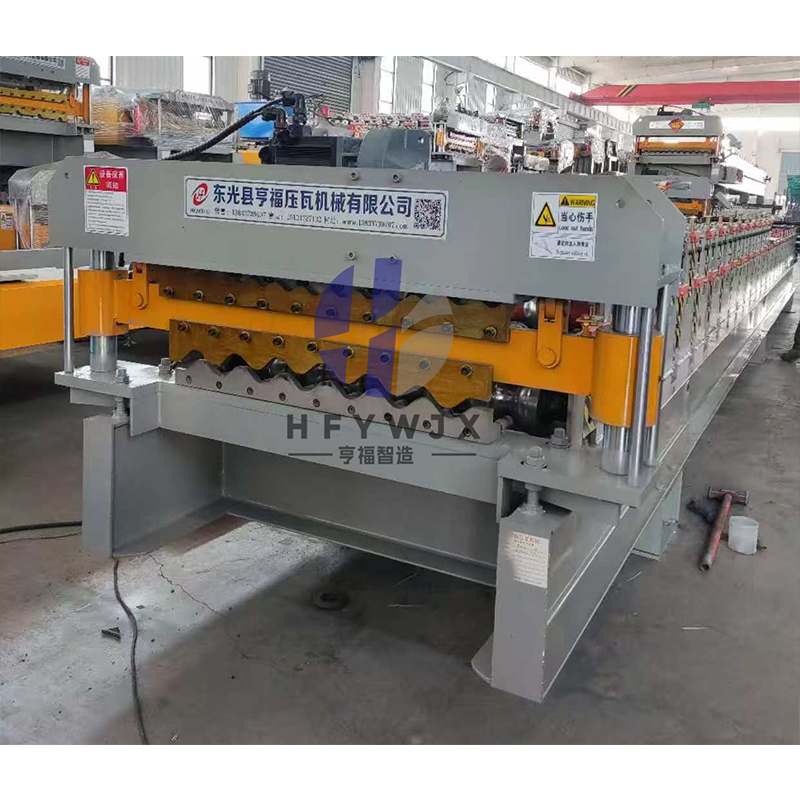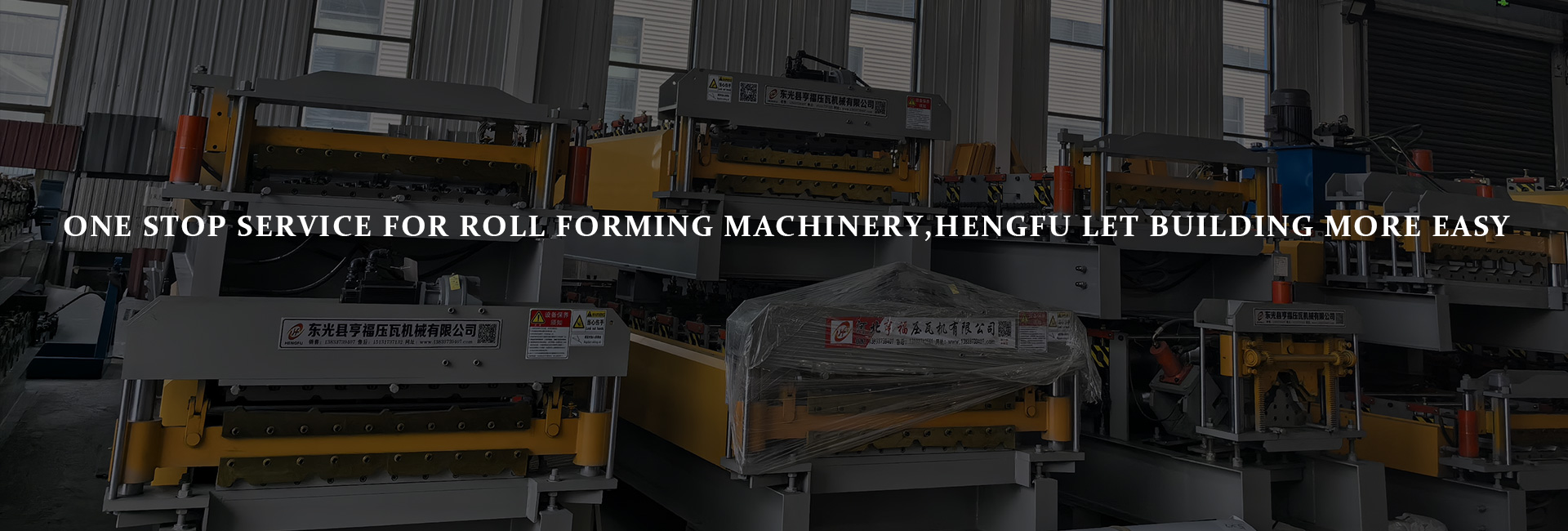Roof Panel Forming Machine: Handling Thin Sheets Without Deformation
writer:优化 release time:2025-11-15 15:56:39 Views:95frequency
Working with thin-gauge metal sheets on a Roof Panel Forming Machine demands a high level of precision. While lightweight panels reduce material costs and simplify installation, their reduced thickness makes them far more vulnerable to dents, ripples, and unwanted bending during forming. For any Manufacturer involved in continuous Production or large-volume panel supply, managing thin sheets correctly is essential to ensure consistent quality and avoid unnecessary material waste.
This article explains the main factors that cause thin-sheet deformation and provides practical setup, alignment, and operational tips to help operators maintain flawless forming output.


1. Why Thin Metal Sheets Are Easily Distorted
Metal sheets under 0.45 mm thickness behave differently from standard roofing stock. Their low rigidity and higher flexibility mean they respond more dramatically to pressure, misalignment, or machine vibration.
The most common deformation causes include:
• Limited structural stiffness
Thin-gauge panels cannot resist compression or lateral load as well as thicker sheets, making them prone to wrinkling.
• Poor entry direction or skewed feeding
If the sheet does not enter the first roller set straight, even a tiny angle variation can spread into significant distortion down the line.
• Inappropriate roller pressure
Rollers that are not calibrated for thin materials apply excessive force, leaving impression marks or creating oil-canning.
• Rollers out of balance or worn
Uneven roller surfaces generate unpredictable stresses and surface defects.
Understanding these risks allows operators to adapt forming parameters before deformation occurs.
2. Preparing the Roof Panel Forming Machine for Thin Materials
A flawless forming process begins long before the sheet touches the first roller. A well-prepared Roof Panel Forming Machine stabilizes the material, minimizing stress during shaping.
✔ Inspect all rollers visually and by touch
Any buildup, bump, or microscopic scratch can transfer directly onto thin sheets.
✔ Confirm that the roller trains are perfectly parallel
Misaligned rollers compress one side more than the other, causing curves or waves.
✔ Ensure the forming path is clean
Metal powder, dust, and leftover grease increase friction and affect feeding smoothness.
✔ Reduce the operational speed if necessary
A slightly slower forming pace gives thin sheets more time to settle into the dies correctly.
These setup steps help create a controlled, predictable forming environment.
3. Feeding Techniques That Prevent Thin-Sheet Distortion
The feeding stage is one of the biggest influencers of panel quality. Even the best-calibrated forming machine cannot correct sheet misalignment at the entrance.
1. Keep the sheet strictly aligned with the guide rails
Use straight reference points or laser-assist tools to verify alignment.
2. Choose guide materials that protect coated surfaces
Polymer or nylon-based side guides minimize scratching.
3. Avoid applying force by hand
Manual pushing introduces uneven stress, especially on thin coils.
4. Straighten curled panels before forming
A pre-leveling unit helps remove initial tension or coil memory, resulting in smoother forming.
Stable, centered entry feeding supports clean, consistent roller engagement.
4. Fine-Tuning Roll Pressure and Forming Shape Development
Thin sheets require a gentler forming approach. Modifying roller gaps and shaping sequences helps operators prevent strain marks or buckling.
• Increase the number of gradual bending stages
Sharp angle transitions should be avoided to reduce stress concentration.
• Lower the downward force applied by the upper rollers
Using unnecessary pressure is one of the quickest ways to damage thin materials.
• Recheck gap settings after machine warm-up
Heat expansion during long production cycles can slightly change roller spacing.
• Test forming on short strips first
This validates settings before running a full coil and reduces potential waste.
These adjustments create a smooth forming progression that protects thin metal surfaces.
5. Protecting Sheet Coatings and Surface Finish
Thin roofing sheets often feature delicate protective layers such as color coatings or galvanization. Preserving these finishes is vital, especially for brands that supply panels in bulk.
✔ Apply minimal yet effective lubrication
Use only approved lubricants that do not stain or leave residue.
✔ Inspect physical contact points for burrs
Any sharp edges on rails, frames, or guides can scratch a thin panel instantly.
✔ Use removable films or surface protectors
Some production lines apply an additional protective layer for safe forming and stacking.
Maintaining surface quality enhances long-term corrosion resistance and customer satisfaction.
6. Handling Formed Panels to Prevent Post-Production Deformation
Once panels exit the Roof Panel Forming Machine, careful handling remains critical. Thin sheets can bend or dent from simple stacking mistakes.
• Place finished panels on padded supports
Soft spacers prevent metal-to-metal abrasion.
• Limit stacking height
Excessive weight causes compression waves or corner bending.
• Secure stacks with anti-slip barriers
Keeping the bundle stable avoids shifting during transport.
• Store finished products on a fully flat base
Even slight unevenness can distort long thin panels over time.
Proper handling ensures the final product remains straight and installation-ready.
7. Maintenance Practices That Improve Thin-Sheet Forming Stability
Reliable thin-sheet production depends heavily on machine health.
Routine maintenance tasks include:
·Cleaning roller surfaces after each shift
·Verifying lubrication at all moving joints
·Checking for roller runout or vibration
·Adjusting chains and gears for synchronized movement
·Inspecting the control system and recalibrating sensors
Well-maintained equipment reduces the likelihood of deformation and increases forming accuracy.
Conclusion: Achieving High-Quality Thin-Sheet Forming Through Proper Technique
Thin metal sheets require a more delicate forming approach, but with the right setup, feeding method, pressure control, and handling practices, operators can achieve smooth and consistent results. For any Manufacturer producing or supplying Roof Panel Forming Machine equipment or bulk roofing panels, adopting these best practices will significantly strengthen production efficiency, reduce rejects, and improve overall output quality.
References
GB/T 7714:Allwood J M, Shouler D R. Generalised forming limit diagrams showing increased forming limits with non-planar stress states[J]. International journal of Plasticity, 2009, 25(7): 1207-1230.
MLA:Allwood, Julian M., and Daniel R. Shouler. "Generalised forming limit diagrams showing increased forming limits with non-planar stress states." International journal of Plasticity 25.7 (2009): 1207-1230.
APA:Allwood, J. M., & Shouler, D. R. (2009). Generalised forming limit diagrams showing increased forming limits with non-planar stress states. International journal of Plasticity, 25(7), 1207-1230.







